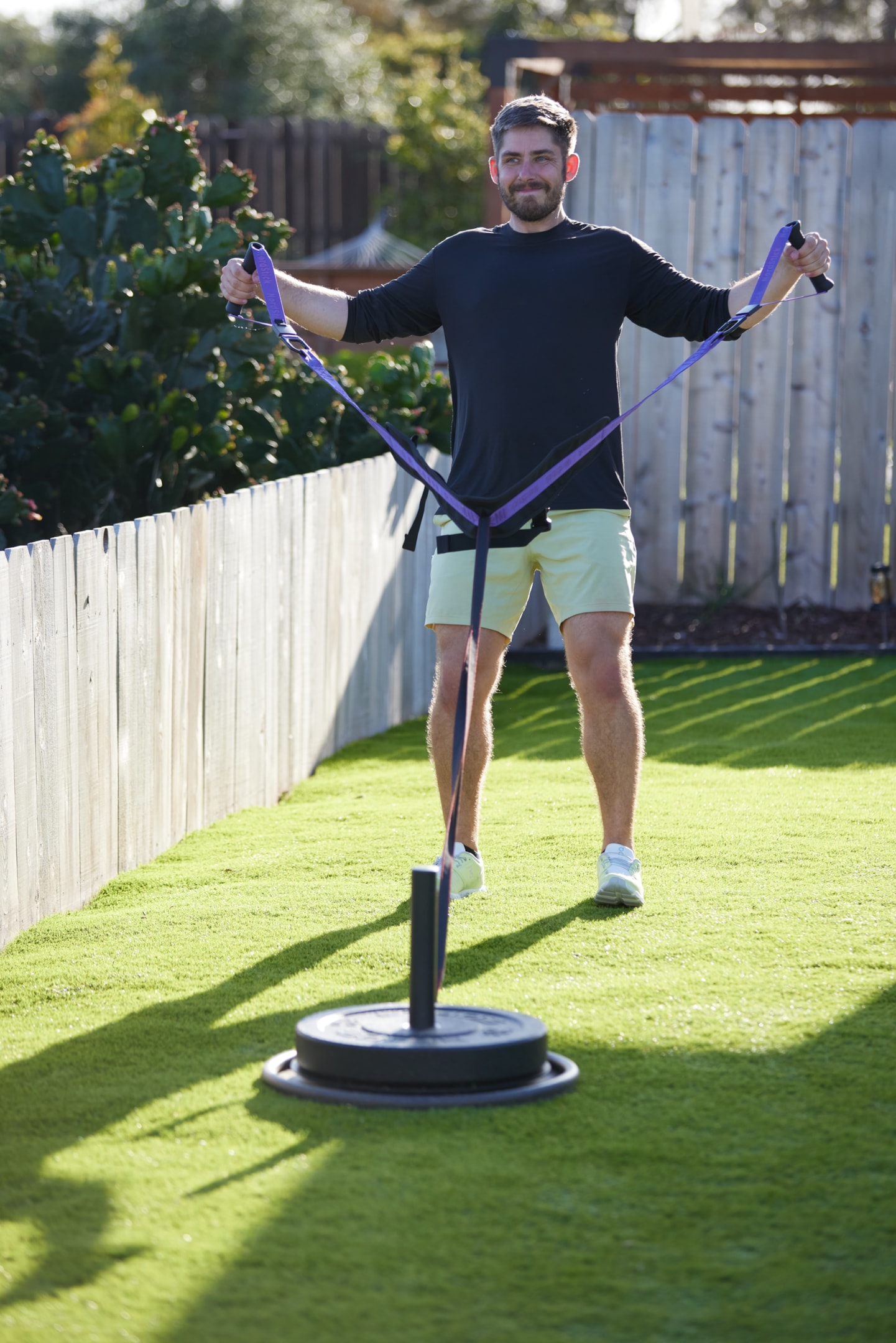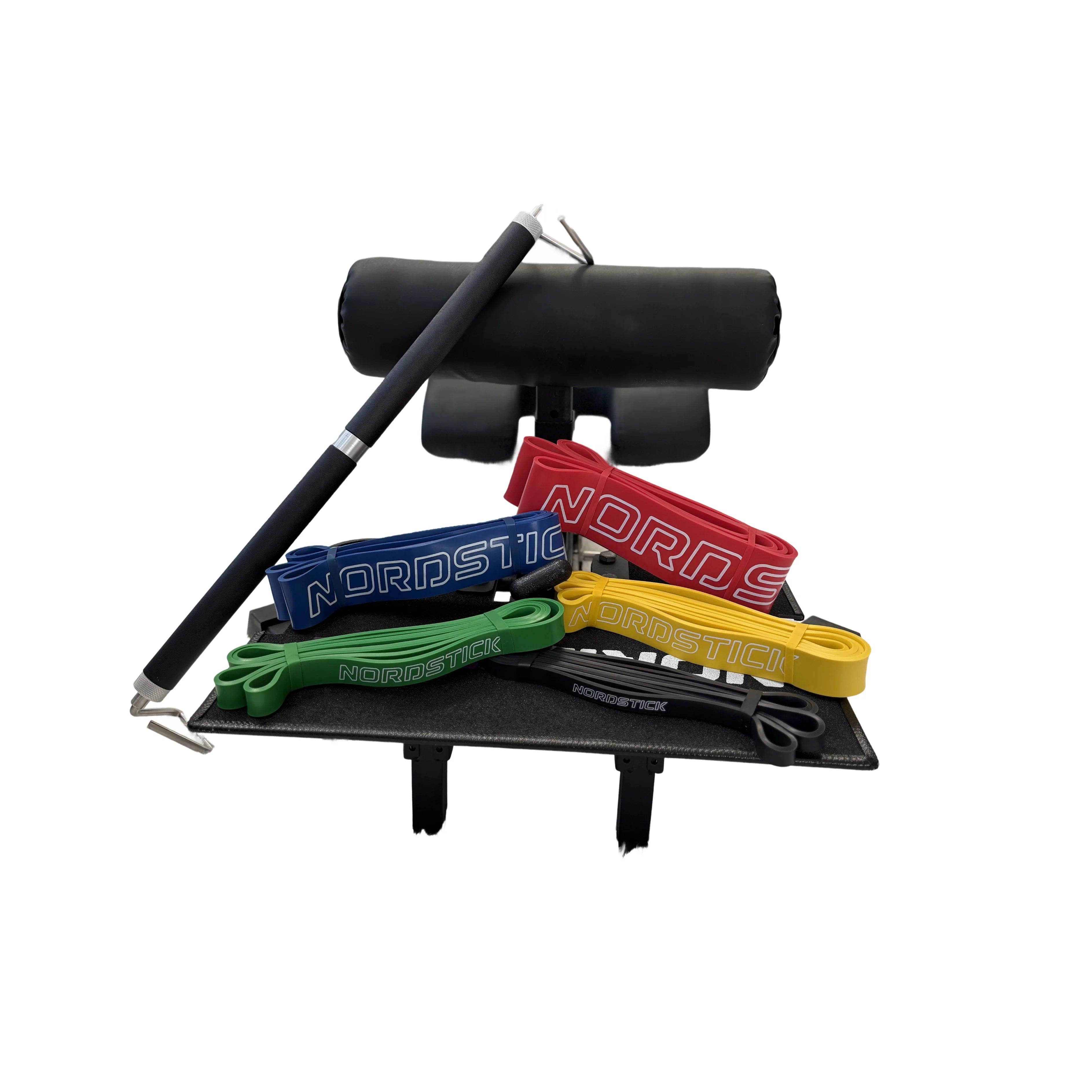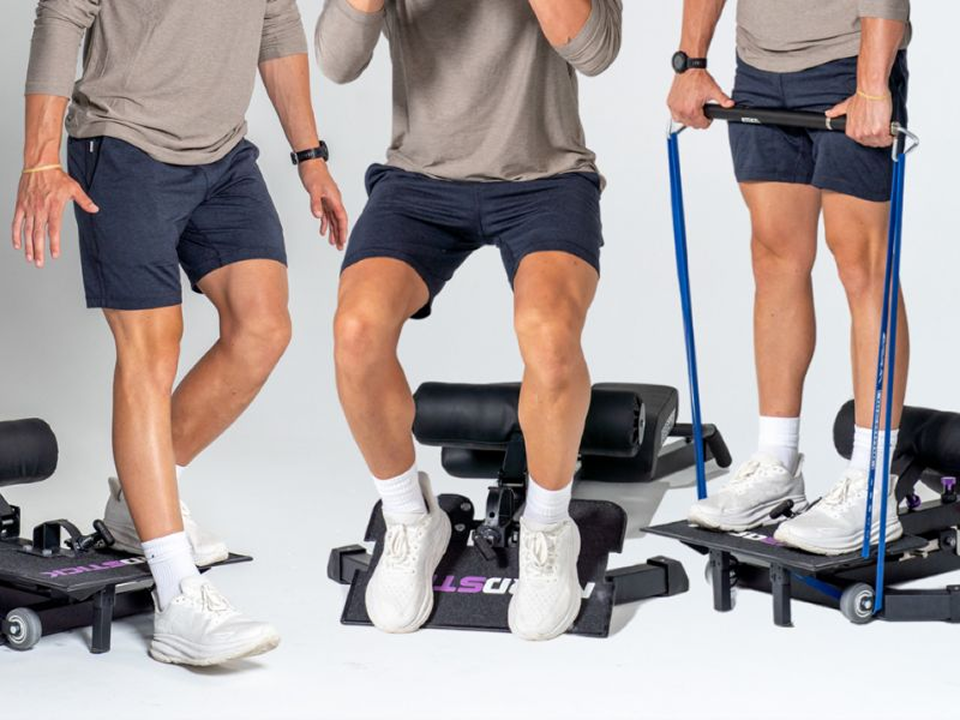Sled training is a dynamic exercise that has garnered attention for its robust benefits across various fitness levels. It's not just an activity; it's a comprehensive workout that can significantly enhance your cardiovascular endurance, mental resilience, and muscle mass, particularly in the posterior chain and quadriceps.
What is sled training?
Sled training is a versatile, dynamic form of exercise that engages almost every muscle in the body, offering a unique combination of strength development, cardiovascular improvement, and mental endurance. Unlike traditional weight training, sled training involves horizontal force application, which mimics everyday activities and athletic movements, making it highly functional.
Full-Body Engagement: When you push or pull a sled, you're not just working your legs; you're engaging your core, arms, and shoulders. The continuous tension and pushing motion require significant effort from the posterior chain (glutes, hamstrings, and lower back) as well as the quadriceps. Additionally, stabilizing the sled as it moves engages your core and upper body, creating a comprehensive workout that builds muscle coordination and whole-body strength.
Cardiovascular Benefits: Sled training is highly effective for cardiovascular conditioning. It can be structured as high-intensity interval training (HIIT) by alternating between periods of intense pushing and rest. This method has been shown to not only increase aerobic capacity but also to boost anaerobic performance, offering a dual benefit that is hard to achieve with other forms of exercise.
Mental Toughness: The sheer physical demand of sled training, where you push against significant resistance until reaching a set distance or time, develops mental fortitude. This aspect of training is crucial for athletes and fitness enthusiasts alike, as it enhances the ability to push through fatigue and maintain high levels of physical output even under stress.
Customizable Intensity: One of the most significant advantages of sled training is its adaptability. You can adjust the weight on the sled to match your fitness level or training goal, making it suitable for everyone from beginners to elite athletes. This flexibility also allows for progression and scaling as strength and endurance improve, ensuring continuous challenge and growth.
Weight sled exercises provide a multidimensional workout that enhances muscular strength, cardiovascular health, and psychological resilience, making them a powerful tool for anyone looking to elevate their fitness regimen.
Let's Get Into the Workout
Warm-Up (10 minutes)
-
Dynamic Stretching (5 minutes)
-
Perform leg swings, arm circles, and hip circles to increase mobility.
-
Focus on gradually increasing the range of motion.
-
-
Light Cardio (5 minutes)
-
Jump rope or jog in place to gradually increase your heart rate.
-
This helps lubricate the joints and increase blood flow to the muscles.
-
Sled Workout Routine

1. Sled Sprints (20 yards per sprint)
-
Setup: Attach a light to moderate weight to your sled. Use a harness or hold the handles to sprint with the sled.
-
Execution:
-
Stand with feet shoulder-width apart.
-
Lean forward at the waist, keeping your back straight and core engaged.
-
Sprint explosively for 20 yards, driving through the balls of your feet.
-
Breathe in on the setup and out during the sprint.
-
-
Sets/Reps: 4 sprints, 90 seconds rest between sprints.
-
Tip: Avoid rounding your back; maintain a strong, straight posture to prevent injury.

2. Sled Drags (Forward) (20 yards per drag)
-
Setup: Attach a moderate to heavy weight to the sled. Face away from the sled and hold the handles or straps over your shoulders.
-
Execution:
-
Take a step forward, driving through your heel and keeping your torso upright.
-
Continue walking forward with controlled, powerful strides.
-
Breathe in as you step forward, and exhale as you pull the sled.
-
-
Sets/Reps: 3 sets of 20 yards, 2 minutes rest between sets.
-
Tip: Keep your movements steady and controlled to maximize engagement of the leg and core muscles.

3. Sled Pulls (Lateral Walks) (20 yards per direction)
-
Setup: Attach a moderate weight to the sled. Stand sideways to the sled path, gripping the handle or strap with both hands.
-
Execution:
-
Sidestep in a controlled manner, keeping the sled moving smoothly.
-
Keep your hips and shoulders square, and drag the sled by moving sideways.
-
Breathe out on the pull, and breathe in on the return.
-
-
Sets/Reps: 3 sets of 20 yards each direction, 2 minutes rest between sets.
-
Tip: Do not let your feet cross; maintain constant tension on the sled.

4. Reverse Sled Drags (20 yards per drag)
-
Setup: Attach a moderate weight to the sled. Face the sled and hold the handles or straps with arms extended.
-
Execution:
-
Walk backwards, pulling the sled towards you.
-
Keep your hips back, knees slightly bent, and back straight.
-
Breathe out as you pull, and in as you reset for the next step.
-
-
Sets/Reps: 3 sets of 20 yards, 2 minutes rest between sets.
-
Tip: Ensure you have a clear path backwards to avoid tripping or twisting.
Cool Down (10 minutes)
-
Light Cardio (5 minutes)
-
Slow walk or gentle stationary bike riding to bring the heart rate down.
-
-
Static Stretching (5 minutes)
-
Focus on stretches for the hamstrings, quads, calves, back, and shoulders.
-
Hold each stretch for about 20-30 seconds, breathing deeply to aid in recovery and flexibility.
-
Additional Tips
-
Hydration: Keep hydrated throughout the workout, especially as sled workouts can be deceptively exhausting.
-
Progression: Gradually increase the weight on the sled as you build strength and endurance over time.
This routine not only boosts overall fitness but also specifically enhances muscular endurance and power. Ensure to maintain proper form throughout to maximize benefits and minimize the risk of injury.
Benefits of incorporating sled training into your workout routine
-
Enhances anaerobic fitness: Sled pushes improve your ability to perform high-intensity efforts without the oxygen debt that often follows.
-
Builds muscle and strength: Especially beneficial for the lower body, sled workouts engage the glutes, hamstrings, quads, and calves.
-
Joint-friendly: Unlike many high-impact exercises, sled pushes are low-impact, making them suitable for those with joint concerns.
-
Improves conditioning and stamina: Regular sled training can help you avoid the dreaded "prowler flu," a common exhaustion experienced after intense exercise.
Understanding Sled Exercises
Muscles worked by sled exercises
The primary targets are the glutes, quadriceps, calves, and hamstrings. However, sled training also engages the upper body, including the triceps, shoulders, and core.
How to do sled exercises correctly
Posture is paramount
Keep your spine neutral and head up to ensure effective force application through the lower body.
Engage your core
Maintain a slight hip hinge to stabilize your upper body, allowing more effective force transfer from your legs.
Sled Push and Sled Forward
How to do the sled pushes correctly
-
Starting position: Place your hands on the handles of the Zero Sled, and assume a staggered stance with your shoulders just touching the handles and elbows bent.
-
Movement: Drive forward with your legs, maintain a forward lean, and push through the balls of your feet, engaging your entire body in a powerful forward motion.
Sled forward
This variation focuses on developing strength and power. Opt for heavier weights and concentrate on explosive, shorter pushes to maximize power output.
Building a Full Lower Body Workout
Creating a workout plan for strength and muscle gain:
-
Frequency: Integrate sled training 2-3 times a week to maximize strength gains in the lower body.
-
Volume: For muscle gains, consider 4-6 sets of 45-90-second pushes, depending on your fitness level and goals.
Incorporating sled training for conditioning and fat loss:
-
Adjust the weight: Utilize a lighter sled and focus on speed and high-intensity intervals for maximal calorie burn and endurance.
Sled workout for recovery and injury prevention:
-
Low impact: Use minimal weight and focus on technique to enhance recovery and prevent injuries, especially around the knees and lower back.
Workout Tips and Tricks
How to warm up for sled workouts
-
Dynamic warm-up: Start with leg swings, lunges, and light jogging to prepare your muscles for the intense workout ahead.
Common mistakes to avoid
-
Watch your back: Keep a neutral spine to avoid strain.
-
Foot placement: Ensure you're pushing off the balls of your feet to maximize efficiency and reduce injury risk.
-
Overloading: Start with manageable weights to maintain proper form throughout your pushes.
Trainer tips for form and technique
-
Set clear goals: Understand whether your focus is on strength, speed, or endurance to tailor your workout appropriately.
-
Maintain focus: Keep your eyes forward and mind focused on the movement to enhance performance.
Who Should Incorporate Sled Training
-
Strength and power athletes: Can greatly benefit from the explosive power and muscle engagement sled training offers.
-
Endurance athletes: Will find sled pushes excellent for building muscular and cardiovascular endurance.
-
General fitness enthusiasts: Anyone looking to enhance their physical fitness can find sled workouts beneficial.
Conclusion
The versatility of the Zero Sled allows for a range of exercises that can significantly enhance your fitness regime. Whether you're looking to build muscle, increase speed, or simply enhance your overall fitness, incorporating sled workouts into your routine can be profoundly beneficial. Start with the Zero Sled, focus on your technique, and progressively increase your intensity for optimal results in building strength, muscle, and endurance. Embrace the challenge of sled training and watch as your fitness transforms.









































Leave a comment
This site is protected by hCaptcha and the hCaptcha Privacy Policy and Terms of Service apply.